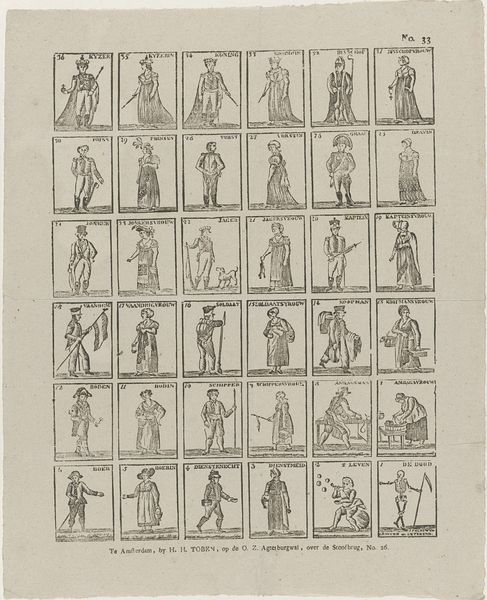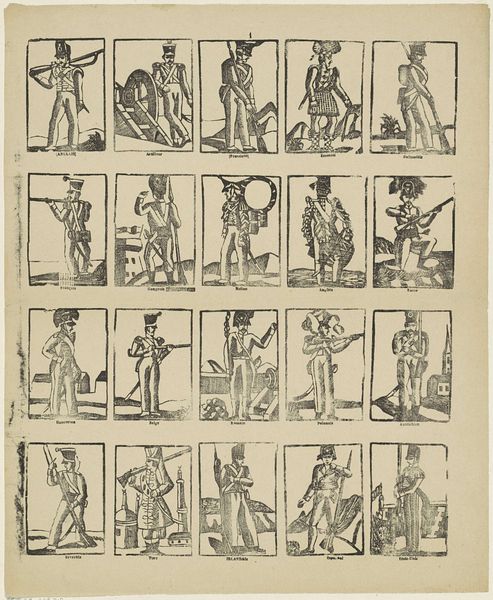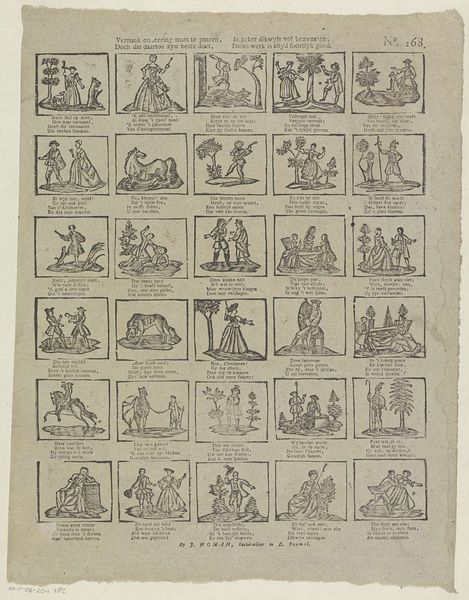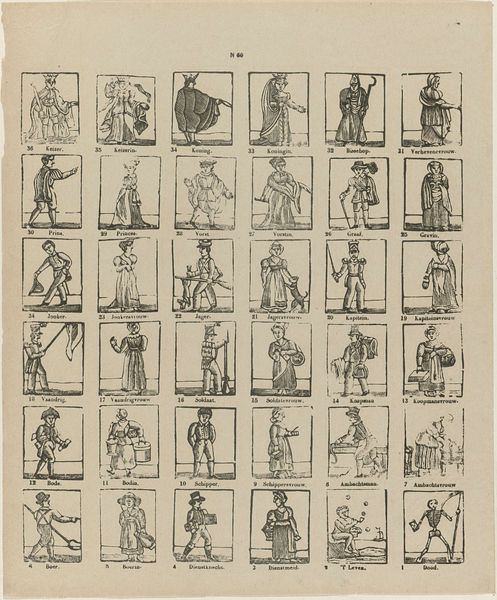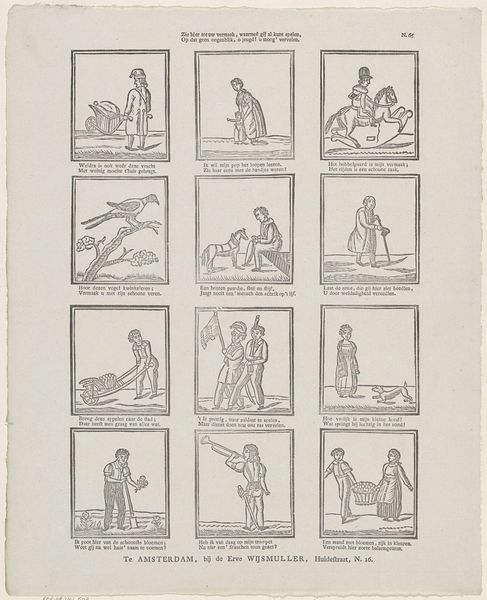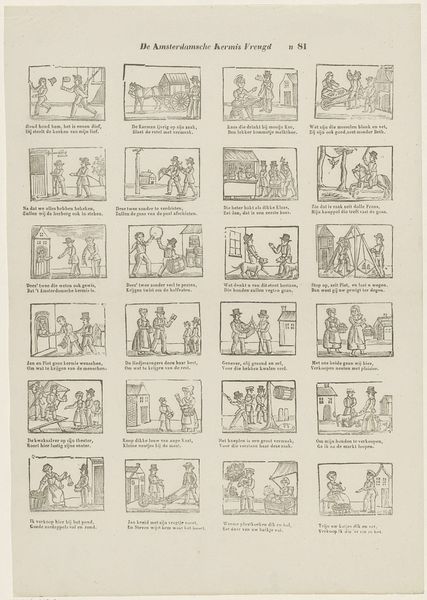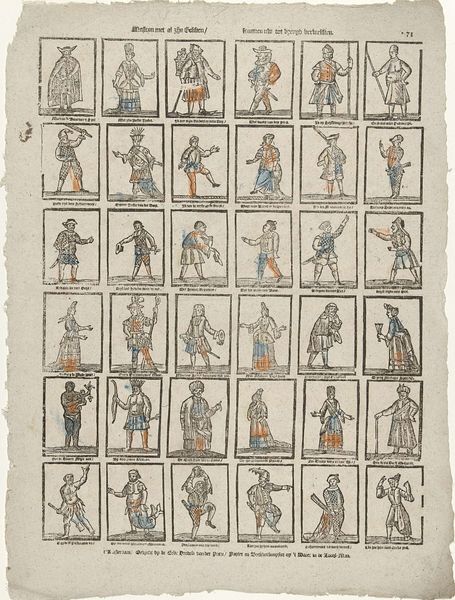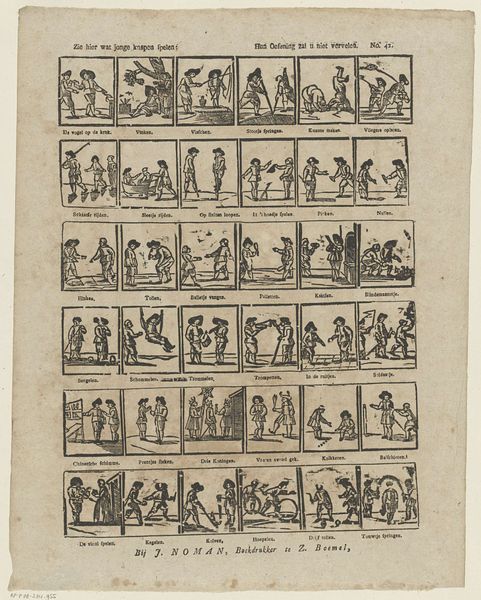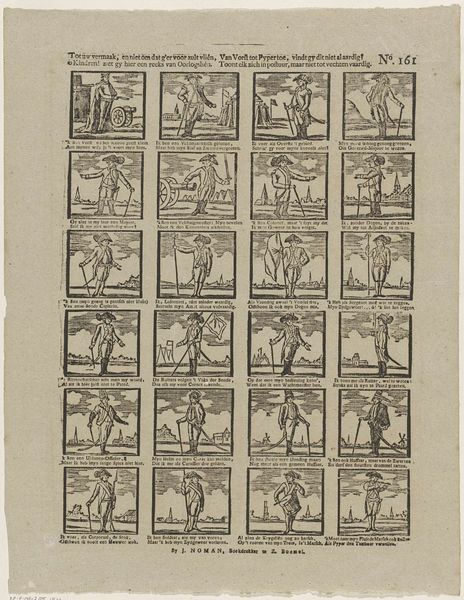
print, engraving
#
narrative-art
# print
#
figuration
#
line
#
genre-painting
#
northern-renaissance
#
engraving
Dimensions: height 405 mm, width 315 mm
Copyright: Rijks Museum: Open Domain
Johan Noman, a bookseller in the Netherlands, made these playing cards, printed on paper. The matrix of the cards themselves would have been laboriously carved from a block of wood. What’s especially interesting is how the material of these cards—wood, and then paper—influences the overall aesthetic. Wood cuts are known for their bold, graphic quality. The relative ease of cutting along the grain, as opposed to against it, lends itself to strong lines and simple shapes, which we see here. This aesthetic in turn influences the appearance of the cards. Consider also the social context of these playing cards. Printed matter like this made it possible to produce images at scale. It was part of a broader shift in early capitalism, in which images and information could be circulated far more widely than ever before. This has huge implications for the accessibility of leisure, making it affordable to all classes, not just the elite. By appreciating these aspects, we can appreciate how craft and design reflect social issues of labor, politics, and consumption.
Comments
No comments
Be the first to comment and join the conversation on the ultimate creative platform.
